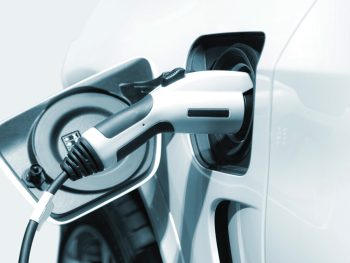Comment: A push for positivity on EVs
In the first of a series of new columns, fleet industry stalwart Mark Jowsey injects some positivity and pragramatism in the switch to EVs.

Fleet industry stalwart Mark Jowsey
The mainstream media do love a bit of a crisis and, just recently, BEVs seem to be firmly in their sights, but not in a good way.
Let’s be honest, no-one likes to be told what to do. So, the countdown to 2030 (now revised to 2035!) – and the removal of a choice of powertrain – was bound to create adverse comment. But can we just get some balance, please?
Initially high pricing and long lead times were seen as the key obstacles to EV adoption. Then it was driving range, then charging infrastructure – there always seems to be something. And, of course, the reduction in the cost of petrol and diesel, alongside higher electricity costs per kilowatt hour, did undermine the ‘in-life operating cost savings’ narrative. But what is overlooked is that there are electricity tariffs available that provide four to six hours of cheap power overnight at less than 10p per kWh!
But a crucial threat to the adoption of BEVs is not actually their range or cost, but a lack of consumer confidence. Many potential drivers simply don’t have enough knowledge to allow them to make objective decisions about whether a BEV is suitable for them.
The pressure will fall on dealer personnel who need to be able to demonstrate they are subject matter experts, answer a wide range of questions and show a thorough understanding of BEVs. The confidence to qualify consumers effectively is essential, because relying on BEV buyers simply giving themselves up will not support stronger and stable RVs.
Equally, OEMs have a responsibility to clearly show usable battery capacity, as this is essential information and crucial for calculating TCO/operating costs. You can’t demonstrate savings if you are guessing at charging costs!
However, at the heart of the problem is the erratic performance of residual values in the used BEV market. Good RV performance, cheaper ‘fuel’ costs and potentially lower maintenance costs should all help offset the new car price premium that most BEVs carry. But this doesn’t work if the industry collectively is unclear who the potential used BEV buyers are. Concern over how long a used car may remain in stock will inevitably drive trade pricing for BEVs down, so marketing them in a more informative way is required.

Equipping company car drivers with the right EV info is a key priority for fleets going electric
For fleet managers, until greater real-world range is the norm, their company car drivers may need to be qualified with all the right information in a similar way. Post-pandemic, many people’s working practices have changed, which, in some cases, has reduced annual business mileages. And all BEV drivers should have a home charge point, or easy access to one at their work location, and must understand the dynamics of public charging. Rapid charge points should be used to add the range to return to your home or office charge point, rather than fully charge.
And for rapid charge points, motorway service area units are typically in high demand, so using apps such as Zapmap to locate ones that are not in use – and within easy reach – is a much better plan.
For most people, the greatest concern is still range, even though many upper-medium sector BEVs offer WLTP figures between 325 and 400 miles. And lower-mediums are typically around 250+ miles, so for most EV drivers, range really should not be such a problem. Drivers truly needing most range are best left in ICE products for as long as possible.
Most recently the head of TCO at Auto Trader, Mark Jowsey has seen and done it all in the auto- motive world. His passion is helping businesses, fleets and drivers to reach their potential

